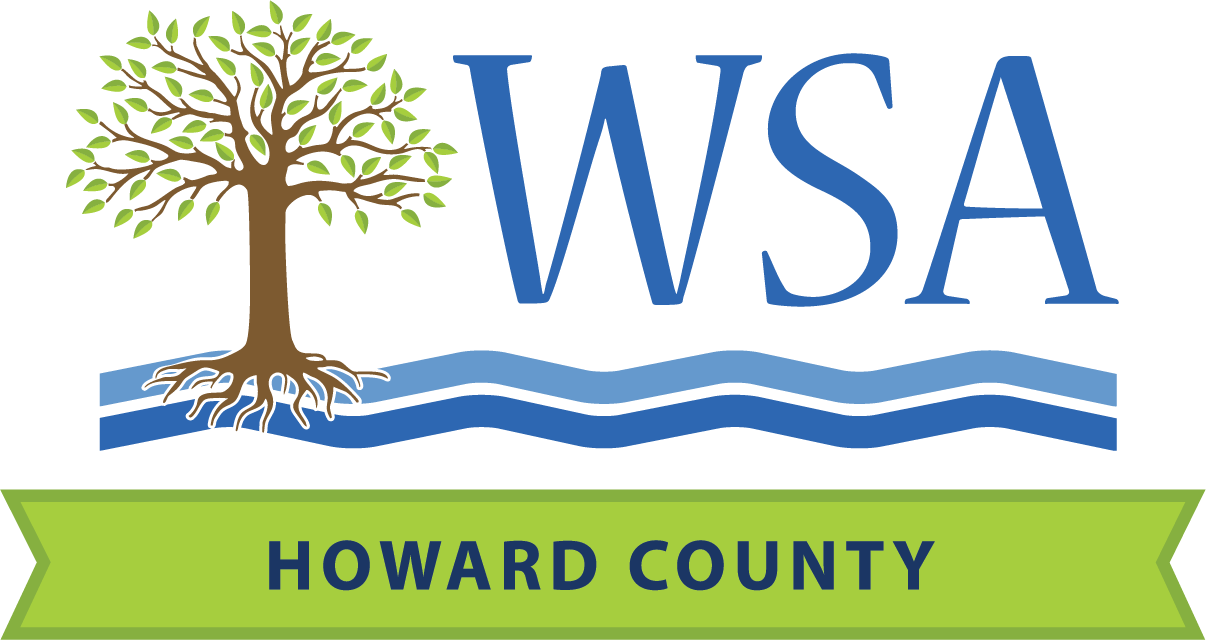Master Gardeners Bay-Wise and Watershed Steward Consultations:
What’s the Difference?
Whereas the role of Bay-Wise Master Gardeners is to educate and encourage homeowners to adopt more bay-friendly practices in their yards, the WSA’s Master Watershed Stewards advise homeowners on the best stormwater management practices for their property. During Bay-Wise consults, Master Gardeners look at pesticide use, downspout outflow, native and invasive plants, habitat and wildlife support, and stream buffers. During homeowner assessments, Master Watershed Stewards assess stormwater problems on the homeowner’s property, and suggest best practices to mitigate stormwater flooding, runoff, and erosion, whether through rain gardens and conservation landscapes; replacement of impervious surfaces with permeable alternatives; or more structural improvements, such as dry wells or bioswales.
Although there is some overlap in the missions and recommendations of both programs, Watershed Stewards are better equipped to deal with serious stormwater issues. If a request for a consultation is a water issue alone, or involves a major water issue, the homeowner should request a WSA consultation. If the request for consultation is for gardening advice (e.g., what native plants to plant where, vegetable gardening) or a minor stormwater issue where native conservation landscaping or planting is a probable solution, the homeowner should request a Bay-Wise consultation. The WSA consultation especially holds true if the homeowner is not interested in gardening or improving their yard, but in fixing the stormwater problems they have. There is a lot of overlap between both groups (and sometimes a joint visit is the best approach); but there are some key differentiators:
| It’s a Watershed Steward Issue if: | It’s a Master Gardener Bay-Wise issue if: |
| It is solely a stormwater issue or involves a major water issue. | The homeowners are asking for gardening advice, want to remove invasives, want to plant natives, want pollinator plants, or can’t get grass to grow in shade. |
| The owner is not interested in gardening, just in getting the issue fixed; and does not mention interest in native plants or creating a pollinator-friendly yard. | The owner is interested in gardening, wants to learn more about natives or increase the natives they have, wants to convert the lawn to native beds, and/or wants to increase the biodiversity in their yard. |
| The issue sounds like it will require CleanScapes or professional intervention (e.g., basement flooding, buried downspouts outletting into streets or neighbor’s property). | The issue sounds like the owner can make some landscape changes themselves, or the CleanScapes intervention is a rain garden or conservation landscape. |
| The owner shows no interest in invasive plants on their property. | The owner wants to learn more about invasives or wants to know how to remove the invasives from their yard. |
Based on each photo and homeowner’s issue, can you guess which visit was a Bay-Wise consultation and which was a Watershed Steward Homeowner Inspection and Site Assessment?

(1) The owner has a yard full of invasives, and wants to know what to plant in their place: Bay-Wise or WSA?
(2) The owner has an eroded slope, and wants to know what to plant there to help with erosion: Bay-Wise or WSA?


(3) The stream on a property is becoming degraded, eroding, and flooding; and the owner wants to know what to do to prevent degradation and protect the stream: Bay-Wise or WSA?
(4) An ephemeral stream surfaces on an owner’s property, and the owner wants to know how to handle the stormwater pouring into it and how to protect it: Bay-Wise or WSA?


(5) The owners have a shady backyard where grass won’t grow, and want to know what to plant here: Bay-Wise or WSA?
ANSWERS: (1) Bay-Wise, (2) Bay-Wise, (3) WSA, (4) WSA, (5) Bay-Wise,
